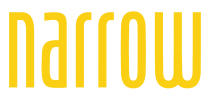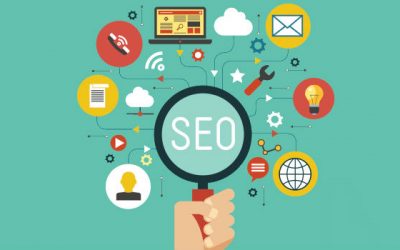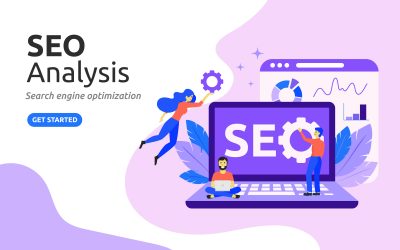Two differences categories can give an impact on Search Engine Optimization ranking. By using these strategies, it can help you reach and engage more potential customers. These categories that can improve your ranking in search engine result page (SERP) are On-Page SEO and Off-Page SEO. However, you must have a good understanding of the factors that can influence SERP. These factors include both on-page and off-page factors.
What is On-Page SEO?
On-Page SEO is the practice of optimizing web page content to improve search engine rankings and visibility. Common on-page SEO practices include optimizing title tags, content, internal links, and URLs.
With proper optimizing, on-page SEO can help users answer their questions very quickly and clearly. Good on-page SEO helps search engines understand what human visitors would see if they visited a page so that search engines can reliably serve up what human visitors would consider high-quality content about a particular search query.
On-Page SEO Factors
On-page ranking factors can have a huge impact on your page’s ability to rank well if optimized. The biggest factors that affect the search engine is:
1. Content
Content is effective in attracting both search engines and helping your organization make connections with website visitors. SEO will find great results and the greatest content. This means you should have great content to help SEO to find you.
To make sure you have the great content, you must have:
- Quality – The more quality, the more likely SEO will be to rank your pages higher on the search engine results page. To attract both the search engines and your human site visitors, you must create a variety of different types of content pieces that are well-written and on topics that are most relevant to your audience.
- Keyword Research – Doing keyword research is an important part of great content. Choose your keyword wisely before start writing because you want to include the targeted keyword in your post’s headline.
- Keywords Used – Nowadays, the use of keywords is more about semantic. Google has gotten smarter over the years and good at interpreting the meaning of searcher’s keywords. As long as you make sure your keywords are present in important places such as headline, URL, and meta description, there is no need to mention them many times in your text.
2. Title Tag
A title tag is an HTML element that specifies the title of a web page and can be displayed on search engine results pages (SERPs) as the clickable headline for a given result. Its also important for usability, SEO, and social sharing. This should be 70 characters or less, including both the keyword your content focuses on. This is another crucial opportunity to include relevant keywords and boost the searchability of your page.
3. Meta Description
Meta descriptions are short descriptions below the URL on the search engine results page and below the headline in a social post, where it describes the content pages. It should be highly relevant to the content of your page, so it should summarize your key concept in some form. It is recommended to keeps your description between 120-150 characters to make sure your description in the search results.
4. Alt Text
Alt Text is used within an HTML code to describe the appearance and function of an image on a page. It is a principle of web accessibility and can describe images to the visually impaired via screen readers. And also important to have alt text descriptions so that every person with a visual impairment can understand what the picture on your website represents.
5. URL Structure
URLs are the locations or addresses for individual pieces of content on the web. An organized URL structure is important for today’s marketers because it allows search engines to crawl from page-to-page on your website more easily, and makes navigation more efficient for visitors.
6. SSL Certificates
Secure Sockets Layer (SSL) security technology is crucial for improving your security, trustworthiness, and visibility. By enabling SSL security, it can be ensured that information from your website is secure from the third party. Google prefers sites that have an SSL certificate, making it essential to boosting visibility. To ensure that your URLs are using the HTTPS:// protocol instead of HTTP://, you must obtain an SSL (Secure Sockets Layer) certificate.
7. Internal Linking
Linking to different relevant pages on your site makes it easier for search engines to crawl everything, and also keeps visitors engaged longer.
What is Off-Page SEO?
Off-page SEO refers to the page ranking factors that occur off your website, like backlinks from another site. It also includes your promotion methods, taking into account the amount of exposure something gets on social media.
Off-Page SEO Factors
Off-page SEO refers to activities you can perform outside the boundaries of your website to improve its search engine rankings. Optimizing for off-page SEO ranking factors involves improving search engine and user perception of a site’s popularity, relevance, trustworthiness, and authority. This is accomplished by other reputable places on the Internet (pages, sites, people, etc.) linking to or promoting your website, and effectively “vouching” for the quality of your content.
There are a few of the different off-page SEO factors that can impact your search engine rankings:
1. Trust
Trust is getting increasingly important, and most of the recent Google updates have hit spammy and obscure websites. This is how Google determines whether you have a legitimate site that visitors can trust. One of the best ways to improve trust is by building quality backlinks from sites that have authority (such as .edu or .gov domain).
2. Link Building
Link building is the most popular and effective off-Page SEO technique. Search engines use backlinks as indications of the linked-to content’s quality. You want to be careful here as spamming sites with your links is a quick and easy way to get your site banned from search engines. Take the time to build relationships with influencers and fans who create quality content and will link back to your site in their content.
3. Social Media
Social media is part of off-page SEO and if you think about it, it’s also a form of link building. Social media mentions are gaining ground as ranking factors and proper configuration of social media profiles can also boost SEO. The more quality content you publish, the more likely you will be to get people to share your content with others.
Conclusion
There are a lot of factors that impact your SEO ranking, but the most important thing to consider is whether your content is valuable and relevant to your intended audience.
Keep in mind that SEO did not overnight to work successfully. It takes months or years and a lot of hard work for you to get the best result.
However, following SEO best practices by creating quality content focused on helping your human visitors is the best way to build a sustainable online business that will continue to bring in new organic site traffic for years to come.








0 Comments